
The system built to manage Russia’s nuclear legacy is crumbling, our new report shows
Our op-ed originally appeared in The Moscow Times. For more than three decades, Russia has been burdened with the remains of the Soviet ...
News

Publish date: May 5, 2015
Written by: Alexander Nikitin
News
ST. PETERSBURG – One of the major projects pursued today by the Russian State Atomic Energy Corporation Rosatom, and which it refers to as “innovative,” is a project dubbed “Proryv” (“Breakthrough”). The importance of this project to the Russian nuclear authority is manifest not just in the lavish financing it receives but the creation within the Rosatom structure of a special division called “Breakthrough Project Office” – something that happens very rarely and only with very important endeavors. Will Rosatom’s new venture achieve a “breakthrough” into the future – or a “breakthrough” into nowhere?
Rosatom’s big ambition
Project Breakthrough envisions implementation of research, development of design documentation, and construction at the site of the Siberian Chemical Plant in Seversk, Tomsk Region, of a nuclear power plant (NPP) with a fast neutron reactor BREST-OD-300. This reactor is expected to use lead coolant and experimental high-density mixed uranium-plutonium nitride fuel.
The Russian abbreviation “OD” (for opytny demonstratsionny) means that this will be an “experimental demonstration” plant. In other words, even if the new BREST reactor is in fact completed within the projected time frame – before 2020 – this will not be a commercial facility, but a pilot demonstration one.
One important component of the planned NPP with a BREST reactor is also an onsite plant that would reprocess the reactor’s spent fuel and refabricate fresh nitride fuel.
The idea behind the Project Breakthrough effort has to do with Russia’s intent to use fast neutron reactors – or, simply, fast reactors – to loop up the nuclear fuel cycle, with the goal being more efficient utilization of uranium resources and reduction in the buildup of spent nuclear fuel. It is believed that Russia’s proved reserves of natural uranium will not be sufficient to support a sustained development of the thermal-neutron-based nuclear energy industry in the long term. By contrast, with fast reactors, proponents of this field say, five times as little natural uranium could be used than in thermal-neutron reactors operated in the once-through cycle. Furthermore, the spent fuel – the bulk of which Russia currently places in storage – is supposed to be almost fully reprocessed into fresh fuel.
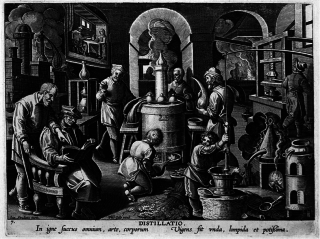
No prior failure discouraging enough
Previous-generation fast reactors – in Russia, units of the BN type belong to this category – have turned out to be significantly more expensive than thermal neutron reactors, and this served as one of the chief reasons why fast-neutron nuclear energy is not pursued in Europe today. It is also known that serious accidents at fast reactors – where, predominantly, a blend of uranium and plutonium oxides, or mixed oxide (MOX), fuel, and sodium coolant were or have been used – may lead to consequences incommensurate with those resulting from accidents at thermal neutron reactors. The serious risks arising with operating BN reactors are associated, in particular, with the use of sodium as the coolant, as sodium ignites when coming into contact with water and air, as well as of the highly toxic plutonium, which may cause severe ecological damage if it escapes into the surrounding environment.
Despite all this, Russia continues to build reactors of this type. In 2014, the new BN-800 unit achieved first criticality at Beloyarsk NPP, in Sverdlovsk Region, in the Urals; design work is being carried out on the next modification, the BN-1200. It should be noted that the BN-800 – just like its predecessor, the BN-600 – still has “experimental,” not “commercial” status. (Even though the BN-600 was taken online as long as 35 years ago). According to plans, the BN-800, in contrast to the BN-600, will be loaded with MOX fuel, which is expected to create the opportunity in the future to gain more specific and more substantive experience operating a fast reactor with a plutonium load – experience that is currently scarcely found in the world.
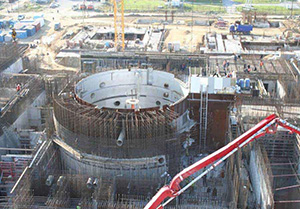
Just how successful this experience will be is hard to tell. For instance, the operating record of the French fast reactor Phénix did not quite prove rewarding, and the reactor was eventually shut down. The troubles with the Phénix were caused not only by the design defects of the reactor itself but also the recurrence of inexplicable physical phenomena linked with drastic reactivity drops in the plutonium core. This problem was never quite fully sorted out.
The designers of the BREST type reactor assert that it will have what is called “inherent” safety – in other words, safety based on the laws of nature (the very acronym BREST was put together from the Russian words bystry reaktor yestestvennoi bezopasnosti, or “fast inherently safe reactor”). Inherent safety is expected to be achieved, primarily, by ruling out rapid power excursions; precluding boiling of the coolant – i.e. lead; via a wide margin to fuel melt for fuel claddings and pellets; and by the low probability of lead coolant loss, fires, or steam explosions due to the chemical properties of lead, its inertness, and high boiling point.
The roadmap for Project Breakthrough today looks as follows:
A little less partisan dissent, please? Anyone?
Project Breakthrough has sparked a rather heated debate, and many in the skeptics’ camp – mostly, among the specialists inside the nuclear power industry itself – have expressed the opinion that, even with the huge investments poured into the project, the idea of creating a lead-cooled fast reactor with mixed uranium and plutonium fuel will be impossible to bring to fruition within the next 10 to 15 years – or, most likely, ever.
Experts refer to fundamental problems with the project, stemming, first and foremost, from the use of lead coolant. The skepticism lies with the task of heating up and maintaining liquid state of 8.5 tons of lead, the metal’s propensity for causing corrosion in the steel elements of the cooling circuit, the issue of compatibility of the coolant and the structural materials, and many other questions. Specialists argue that new alloys and new steel grades will likely have to be developed for a lead-cooled reactor unit, and that will require dozens of years of research.
A separate problem that is cited is the issue of performance and maintainability of steam generators, main circulation pumps, and other main equipment in an environment involving the use of lead. It is underscored that experience operating a reactor plant based on lead-only coolant is yet to be acquired anywhere in the world, and so, suggestions are often heard to roll back to lead-bismuth coolant, which is deemed preferable from the point of view of technological efficiency. As they advocate in favor of this option, the nuclear community’s experts cite the operating history of nuclear submarine reactors where lead-bismuth coolant was used. Even though that record, too, is certainly far from stellar.
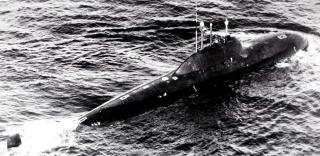
The 30-year history of operating eight nuclear submarine reactor plants with lead-bismuth coolant is punctuated by three nuclear accidents and innumerable small accidents and malfunctions. An accident even occurred at the ground-based prototype of the naval nuclear propulsion plant 27VT/5, due to a blockage of the reactor core by oxides and other impurities in the liquid metal.
Additionally, the large-scale fast-reactor-based nuclear power industry that Project Breakthrough’s ideologues have set their sights on will need large volumes of liquid metal coolant. World reserves of lead are estimated at 100 million tons, and three tons of lead are produced annually in the world. Proved reserves of bismuth total 160,000 tons, and global production is estimated at 7,000 tons of year.
And, finally, the more serious concerns: lead-bismuth coolant, after its use in a reactor, contains a large quantity of highly radioactive polonium, which is produced with irradiation of bismuth. The activity level of lead-bismuth coolant is some 20,000 times as high as that of pure lead coolant. Obviously, the consequences of a serious accident at a reactor using lead-bismuth coolant would be nothing short of a catastrophe.
Safe… for robots
Experts raise issues with the nitride fuel as well. Specialists argue that a transition to nitride fuel would involve covering basically that same long road that has once been traveled with the oxide-based fuel for the thermal neutron VVER series, which constitutes over a half of Russia’s commercial nuclear fleet (the latest modification, VVER-1200, is also Rosatom’s flagship model used in both domestic construction projects and those offered on the international market): in other words, engineers will have to prove the suitability of this particular fuel for the reactors under development. Save for research purposes, no one has ever tried nitride fuel in nuclear energy anywhere before. The largest extent to which studies into nitride fuel have been undertaken to date was a program completed by French specialists at the Russian reactor BOR-60 at the State Scientific Center – Research Institute of Atomic Reactors (NIIAR) in Dimitrovgrad, in Ulyanovsk Region in Central European Russia. The French achieved a fuel burnup level of 12% and stopped the experiment at that on account that interest for this type of fuel waned.
In Russia, experiments with nitride fuel are currently being conducted at NIIAR, as well. According to information that is available today, scientists in Dimitrovgrad have reached a fuel burn-up level of 4%. This means that, basically, all the work researching nitride fuel is still ahead. And what sort of results this work will bring is hard to predict.
Additionally, according to the World Nuclear Association (WNA), uranium-plutonium nitride fuel has high thermal conductivity and a high density of fissile atoms but is subject to swelling and contamination with radioactive carbon-14, which is formed with neutron absorption by atoms of nitrogen-14. To avoid this, pure nitrogen-15 is needed, the WNA points out, which requires enrichment.
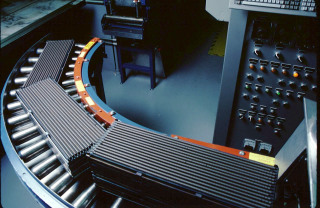
And a whole other problem, furthermore, emerges with the development of an onsite nuclear fuel cycle to service the future nuclear power plant. This onsite complex will be needed to provide an NPP with BREST reactors with a fully looped closed nuclear fuel cycle.
Open and closed nuclear fuel cycles in the Russian nuclear industry’s definition:
An open nuclear fuel cycle is a cycle where the main material feeding fissile nuclides to the core is nuclides of uranium enriched in the isotope uranium-235 and the supplementary fissile material (in the case of mixed uranium and plutonium fuel) is fissile nuclides extracted from spent nuclear fuel. The cycle is called “open” because it is open to enriched uranium which is, in regard to this type of cycle, an externally supplied source material (it comes from outside). Depending on how spent fuel is further managed, the open nuclear fuel cycle can be “unlooped,” “quasi-looped,” or “looped.”
An open unlooped nuclear fuel cycle is a cycle where spent fuel is considered radioactive (nuclear) waste.
An open quasi-looped nuclear fuel cycle is a cycle where fissile and fertile nuclides (mainly, plutonium-238 and unburnt uranium-235) are extracted from the spent fuel in order to produce fresh nuclear fuel, and the minor actinides (americium, neptunium, and others), as well as fission products, are subject to final disposal.
An open looped nuclear fuel cycle is a cycle where the fissile and fertile nuclides in the spent fuel are extracted for fabrication of fresh nuclear fuel and the minor actinides are extracted for burning (transmutation) in the reactor’s nuclear fuel load, whereas fission products are subject to final disposal.
A closed nuclear fuel cycle is a cycle where the core is fed with fissile nuclides extracted from the spent fuel unloaded from that same core. The closed cycle is referred to as “closed” precisely because it is closed to nuclides that are external (in relation to this reactor core). Depending on the spent fuel management approach used, the closed nuclear fuel cycle can be classified as “quasi-looped” and “looped.”
In a closed quasi-looped nuclear fuel cycle both the minor actinides and the fission products in the spent fuel are subject to final disposal, whereas in a closed looped nuclear fuel cycle, the minor actinides are burnt in the nuclear reactor core, while fission products are disposed of.
The breeding ratio of uranium-plutonium fuel in these reactors will be no less than 1. In other words, as much (or more) plutonium will be produced in BREST reactors as will be burned. Fuel assemblies, after they have finished their operation in the reactor, will be unloaded and transported to the radiochemical shop that will be part of the onsite nuclear fuel cycle complex. At the radiochemical shop, workers will process the spent fuel to extract unburnt uranium-235 and recycled plutonium-238, separate them from fission products, add uranium-238, manufacture fuel pellets, make fresh fuel assemblies, and load these back into the reactor.
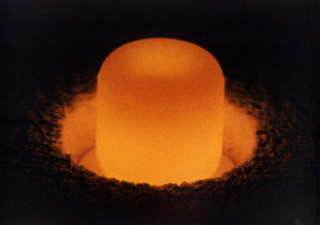
In other words, an onsite nuclear fuel cycle will require construction of a full-scale high-technology enterprise that will carry out operations involving radiochemical reprocessing of spent fuel, fresh fuel fabrication, and manufacturing of fresh fuel assemblies. This enterprise will have to be responsible for the task of manufacturing “dirty” fuel that will contain highly radioactive minor actinides and plutonium. The radiation environment in the production facilities will, mostly, depend on the isotopic composition of the plutonium and the percentage content of minor actinides in the fuel. But an undeniable problem of high background radiation levels will develop with multiple recycling of minor actinides together with plutonium. No country has experience producing nuclear fuel under such conditions anywhere in the world. Most likely, this will require the use of super-sophisticated high-tech robots.
And as to how safety will be ensured at such nuclear power plants, and what reaction the public will have to the construction near a populated area of a nuclear power plant with an onsite fuel reprocessing and manufacturing complex – that would be worth hazarding a guess.
A negative balance
Then, there is the money matter. The question of how much Project Breakthrough will cost has been asked repeatedly during all this time that the debate around the controversial project has been going on. In preliminary estimates that were available in 2012, the expenses associated with developing and building the pilot demonstration unit with a BREST reactor would be in excess of 40 billion rubles (a little under $783 million in current exchange rates): about 25 billion rubles for the BREST-300-OD itself and 17 billion rubles for the onsite fuel cycle complex. No one even bothers with a query about the price tag of a fully commercial BREST-running nuclear power plant, nor, for that matter, about how expensive the electricity produced by such a power plant will be.
Almost a billion dollars – in exchange rates that held only a few months back, before the Russian economy worsened sharply and the ruble took a nosedive – is a hefty sum, and it could help solve at least some of the safety problems the Russian nuclear industry has already amassed, such as those of the aged reactors still in operation, old spent fuel storage sites, etc. There isn’t much sense in crossing swords over whether Project Breakthrough will ever be realized or not. By all appearances, nuclear reactors with lead coolant and an onsite fuel cycle will hardly take off on a serial production level before the middle of this century. Consequently, they cannot be expected to have any impact on the country’s energy market and policies within the next several decades. What the Russian power landscape will look like in thirty years no one can say for sure. But 40 billion rubles is money that might be spent on a very ambitious – and so far, unpromising – project already today.
And from the point of view of safety, one could argue that even if the architects of this project succeed in making good at least partially on the “inherent safety” claim (and no one has full confidence that that will happen), the idea of building an onsite fuel cycle complex – taking all the problems of “dirty” fuel manufacturing process into account – may reduce all the inherent safety accomplishments to zero, or even send the whole enterprise straight to the minus column.
All seems to indicate that the onsite fuel cycle technology will require prompt – almost skipping the cooling period – reprocessing of the spent fuel. Such a technology would be very difficult to implement for the reason of the extreme hazard associated with handling the “hot,” highly radioactive fuel that has not spent a sufficient period of time in a cooling pool. Spent fuel reprocessing, extraction from it of plutonium and fission products, processing of these materials, and making new fuel loads at the onsite plants – none of these operations will contribute to a nuclear power plant’s safety. A detailed look will also have to be taken into the discharges that may accompany the production processes at an onsite fuel reprocessing plant and the operation of the power plant itself where fast reactors and mixed uranium-plutonium fuel will be used.
‘Progress’ from dirty waste to dirty fuel
Essentially, what Project Breakthrough offers is a transition from the concept of “clean fuel – dirty waste” to the concept of “dirty fuel – clean waste.” This approach will not bring the desired safety. Quite the opposite: while, today, the dirty waste can be isolated in places located at a sufficient distance from populated areas, tomorrow’s “dirty fuel” will be manufactured right next door to residential buildings, and people will have to live with this dirty fuel production site in their neighborhood. Nor will the waste be impeccably clean, as fission products still remain under the closed looped cycle, and they will have to be removed and isolated anyway.
The more saturated a territory is with dangerous technologies, the bigger the risks and probability of accidents with severe consequences. One will be well served here by remembering the principle of restraint in concentrating especially hazardous productions in one place – heeding, for instance, the warning issued against such practice by Academician Valery Legasov in his formulation of the safety concept for nuclear energy.
Still, development of Project Breakthrough is under way. As the Russian nuclear news and analysis website AtomInfo.ru reported last October, acceptance tests had been conducted in Seversk on the experimental fuel assembly ETVS-5 with mixed uranium-plutonium nitride fuel. The acceptance commission stated that the assembly – a prototype for the model to be used in the BREST-OD-300 reactor – can be used for trials in the BN-600 reactor at Beloyarsk NPP for the period of the next three years. In August 2014, construction work had commenced at the Siberian Chemical Plant on the future nitride fuel production plant. The plant is scheduled for commissioning in 2017-2018.
Construction of the reactor itself is planned to start in 2016, the website reports, with the completion date slated for 2020. Project Breakthrough is to become fully operational in Seversk by 2023.
Whether all these plans are destined for fulfilment in the conditions of the deep economic crisis that Russia is struggling through – and whether Proryv will prove the energy and economic “breakthrough” it is professed to be – we have yet to find out. But one can be quite certain in predicting that the public attitude to these sites will likely be extremely unsparing.
Alexander Nikitin is chairman of the board of the St. Petersburg Environmental Rights Center (ERC) Bellona. This article was originally published in Russian in the latest issue of Environment & Rights, a quarterly published by ERC Bellona.

Our op-ed originally appeared in The Moscow Times. For more than three decades, Russia has been burdened with the remains of the Soviet ...

The United Nation’s COP30 global climate negotiations in Belém, Brazil ended this weekend with a watered-down resolution that failed to halt deforest...

For more than a week now — beginning September 23 — the Zaporizhzhia Nuclear Power Plant (ZNPP) has remained disconnected from Ukraine’s national pow...

Bellona has taken part in preparing the The World Nuclear Industry Status Report 2025 and will participate in the report’s global launch in Rome on September 22nd.